The Definitive Guide to Cleaning Silver: Techniques and Insights
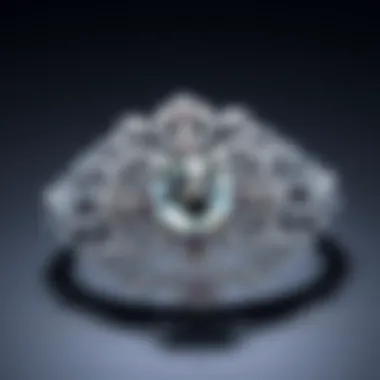
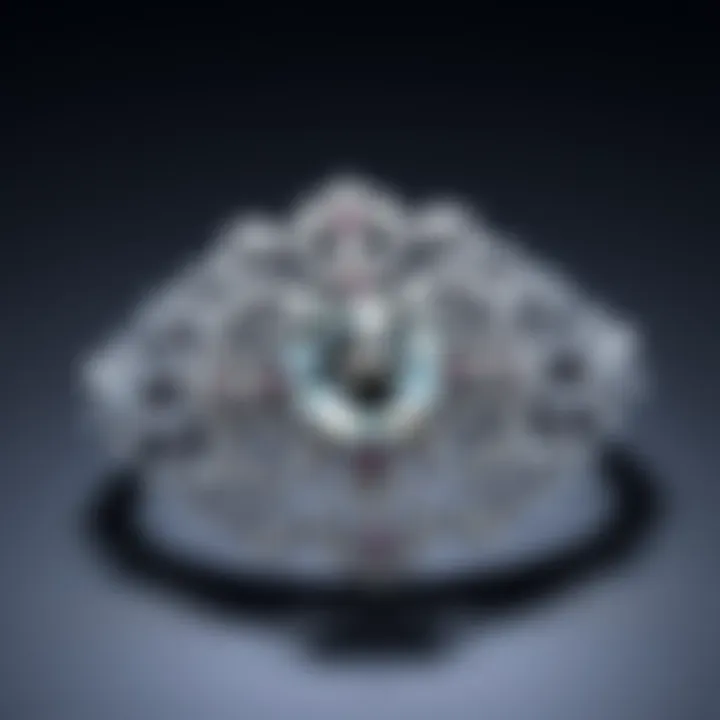
Intro
Cleaning silver is no small feat, especially when that shiny metal begins to take on a dingy appearance due to tarnish. The world of silver cleaning is as multifaceted as the silver itself. Issues surrounding tarnishing can lead one to ponder not just "how to clean silver" but also the science beneath the surface. With a little understanding of what tarnish is at its core and some insights on effective cleaning methods, anyone can maintain their silver items in tip-top shape.
In this guide, we will delve into a comprehensive look at the techniques available for cleaning silver. From traditional remedies found in Grandma's kitchen to the latest science-backed solutions, we're here to sort the wheat from the chaff. We'll also explore ways to prevent tarnishing in the first place, ensuring long-lasting shine for your beloved silver pieces.
With silver often intertwined with gems, this discussion doesn't stop at cleaning alone. It's essential to appreciate how silver interacts with gemstones, particularly in jewelry settings. Understanding these dynamics will not only enhance our silver maintenance practices but also appreciate the unique attributes of the silver-gemstone duo.
So, fasten your seatbelt as we embark on this shiny journey through the realm of silver cleaning and care.
Preamble to Silver Cleaning
Cleaning silver is more than just a chore; it’s an art form that taps into the history and allure of the metal. Silver, a beloved medium for jewelry and artifacts alike, holds a special place in the hearts of collectors and enthusiasts. Yet, its beauty often comes with the challenge of tarnishing, which can obscure its shine and craftsmanship. Understanding how to effectively clean silver is crucial not just for maintaining its aesthetic appeal but also for preserving its value and integrity over time.
Understanding the Need for Cleaning
The necessity of cleaning silver stems from its intrinsic properties and exposure to the environment. Silver is known for its lustrous finish, but over time, exposure to air, moisture, and certain chemicals can lead to tarnishing. This tarnish often manifests as a dull, dark layer on the surface, a process primarily driven by chemical reactions involving sulfur and oxygen. If left unattended, tarnishing doesn’t just dull the piece; it can erode the metal itself, leading to pitting or other irreversible damage.
Regular cleaning ensures that your silver retains not only its visual charm but also its market value. Whether it’s a family heirloom or modern jewelry, a properly maintained piece sustains its character and significance. Understanding when and how to clean silver becomes essential for anyone who values the pieces in their collection.
Common Causes of Silver Tarnishing
There are various factors at play that lead to the tarnishing of silver items, and being aware of these can help you take preventive steps. Here are some of the most common culprits:
- Exposure to Air: Silver reacts with sulfur compounds in the air, leading to tarnish formation.
- Moisture: Humidity can accelerate the tarnishing process. Keeping silver in a damp environment significantly increases the chances of tarnishing.
- Cosmetics and Perfumes: Lotions, perfumes, and even certain foods can interact with silver, leading to discoloration.
- Acidic Foods: Contact with acidic substances can cause tarnishing due to the chemical reactions that occur in such environments.
- Worn Patina: Sometimes, the natural oils from skin can mix with dust and dirt, creating a buildup that can tarnish silver over time.
Those in the world of gemstone collecting and silver crafting should pay special attention to these factors. While silver is a durable metal, it is also sensitive to environmental factors that can compromise its beauty. Therefore, a comprehensive understanding of cleaning methods and the origin of tarnish stands paramount in keeping your silver wear and treasures looking pristine.
Chemical Properties of Silver and Tarnishing
Understanding the chemical properties of silver and how they relate to tarnishing is crucial for both preserving its luster and prolonging the life of silver items. Silver, known for its beauty and conductivity, interacts with various environmental factors, leading to the tarnishing phenomenon that many collectors and jewelry enthusiasts dread. This section will delve into key factors, primarily sulfur compounds and oxidation, that play significant roles in silver tarnishing. By grasping the underlying chemistry, one can make informed decisions when it comes to cleaning and maintaining their precious silver pieces.
The Role of Sulfur in Tarnishing
Sulfur is a sneaky culprit when it comes to tarnishing silver. When silver comes into contact with sulfur-containing compounds—often found in the air, especially in urban areas—an uninvited reaction takes place. As sulfur attaches to the silver surface, it transforms its brilliant sheen into a dull and tarnished appearance. This process is often accelerated in environments where sulfur levels are elevated, like near industrial settings or even from common household items such as rubber bands and some adhesives.
Interestingly, not all silver tarnishes equally. Sterling silver, which consists of 92.5% silver and 7.5% other metals like copper, tarnishes more readily compared to pure silver due to the impurities. Thus, knowing the specific type of silver and its surroundings can give collectors and enthusiasts a heads-up. Doing something as simple as keeping silver clean and avoiding exposure to sulfur-rich environments allows for improved longevity and lesser tarnish issues.
Oxidation and Its Effects on Silver
Oxidation is a natural process that all metals undergo, and silver is no exception. This reaction occurs when silver interacts with oxygen in the air, forming silver oxide, which presents as tarnishing. Unlike some metals that may oxidize into rust, silver tarnishes develop a layer that changes its characteristic color—often to a gray or black hue. This oxidation can be exacerbated by the presence of moisture, leading to a cascade of deterioration if left unchecked.
For silver enthusiasts, this highlights the importance of regular care and attention. A tarnished piece can be brought back to life, but excessive buildup over time can damage the silver’s surface, resulting in a less-than-desirable appearance. Regular cleaning and the right storage methods can help mitigate oxidation effects.
It's also worth noting that while oxidation may seem entirely detrimental, some collectors even appreciate the character that tarnished silver shows, especially in antique pieces. Wether considered a flaw or a feature, the oxidation process is pivotal in understanding how to care for silver properly.
Proper awareness of sulfur exposure and oxidation not only aids in cleaning but also helps in appreciating the unique story that each piece of silver tells.
In sum, exploring the chemistry behind silver tarnishing isn't just academic; it’s about actively enhancing and preserving the beauty of silver items for future enjoyment. By taking the time to understand these chemical properties, enthusiasts can adopt proactive care strategies to maintain the exquisite allure of their beloved silver treasures.
Traditional Cleaning Methods for Silver
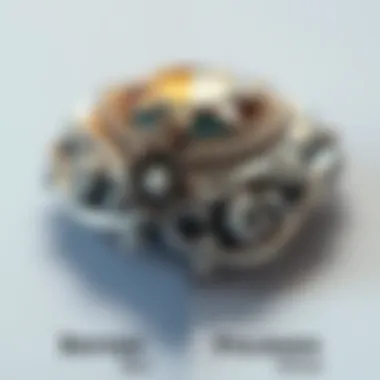
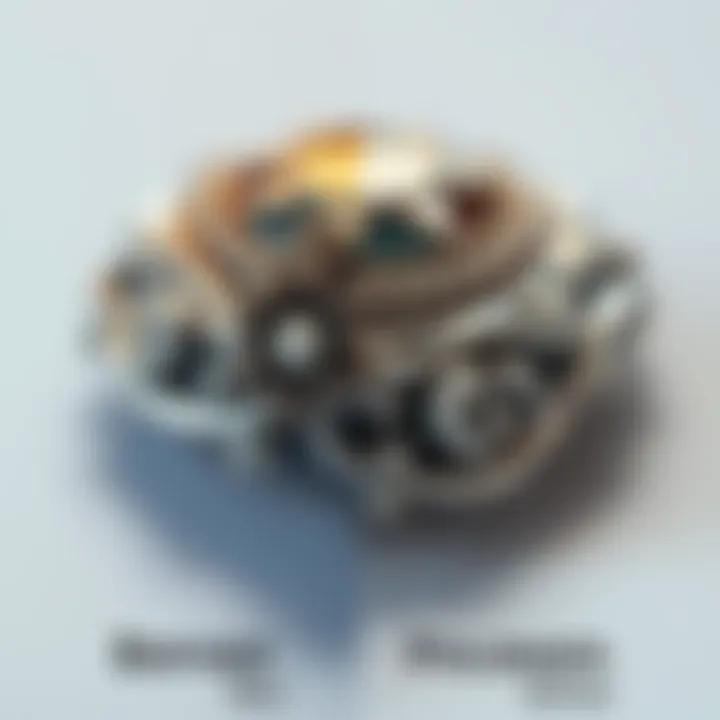
Cleaning silver effectively requires a keen understanding of both the materials involved and the methods applied. Traditional cleaning methods have stood the test of time, offering a balance between cost-effectiveness and simplicity. As we explore the techniques, we shall uncover the intricacies that have kept these age-old practices relevant even amidst modern innovations. Understanding these methods is essential not just for maintaining the beauty of silver items but also for preserving their intrinsic value, especially for collectors and enthusiasts.
Using Baking Soda and Aluminum Foil
One of the most revered methods for cleaning tarnished silver involves the clever combination of baking soda and aluminum foil. This method is not only effective but also taps into basic chemistry principles. When silver meets sulfides in tarnish, it forms a discolored layer. Using aluminum foil alongside baking soda creates an electrochemical reaction that helps reverse this process.
To implement this technique, line a bowl with aluminum foil, shiny side up. Place your silver pieces into this bowl and then generously sprinkle baking soda over them. Pour in hot water until everything is submerged. As the solution bubbles away, the tarnish lifts off, leaving your silver looking sparkly and fresh. It's both environmentally friendly and wallet-friendly – truly a win-win!
This simple yet effective method highlights the importance of understanding your materials. By melding basic household ingredients, you can rejuvenate your tarnished silver swiftly without the risk of harsh chemicals.
Polishing with A Soft Cloth
For those who appreciate the tactile elements in cleaning, using a soft cloth stands out. It’s straightforward, yet it requires some finesse. Regular polishing with a clean, soft cloth can keep your silver looking its best and often prevents tarnishing from taking hold in the first place. The technique itself is as simple as it sounds: gently rub the cloth over the surface of your silver items. Look for lint-free or microfiber cloths, as they are less likely to scratch your silver.
Additionally, use a back-and-forth motion rather than a circular one to avoid swirl marks. Consistency is key: especially for jewelry or flatware you use often. Not only does this method ensure your pieces remain bright and shiny, but it also becomes an enjoyable ritual, giving you a chance to connect with your treasures every time.
Applying Silver Polish: Pros and Cons
While the natural methods have their merits, commercial silver polishes still hold a place in many a collector's heart. However, before diving headfirst into a bottle of polish, it’s worth considering the pros and cons.
Pros:
- Efficiency: Specialized silver polishes are designed to work through tarnish quickly.
- Availability: They are easily accessible in stores or online, making it convenient for last-minute cleaning before a special occasion.
- Variety: Many products cater to specific types of silver, such as those containing gemstones or delicate designs.
Cons:
- Chemicals: Some silver polishes contain harsh chemicals which can be potentially damaging if used incorrectly.
- Overuse Risk: Frequent application can strip away the patina that many collectors prize.
- Cost: While affordable, repurchasing polish can add up over time.
In summary, while commercial silver polishes can do the job efficiently, discerning users should approach them with caution and consideration, weighing the benefits against the potential downsides. Well-informed choices here keep your cherished items safe and gleaming. Each method reviewed ultimately aims to empower you in your silver care journey.
Modern Techniques in Silver Cleaning
In today's fast-paced world, traditional methods of cleaning silver can sometimes fall short as we seek more efficient and effective approaches. Modern techniques in silver cleaning not only promise better results but also save time and effort. As we delve into this section, we unveil the latest advancements that cater to the needs of gemstone enthusiasts, collectors, and jewelry designers who require optimal care for their pieces.
Whether it’s vintage cutlery, ornate jewelry, or even test pieces used in geology, understanding these techniques is crucial in preserving the longevity and beauty of silver items. Using technology in our cleaning routines helps maintain their aesthetic appeal and prevents costly damage that can arise from improper care.
Ultrasonic Cleaners: A Technological Advancement
Ultrasonic cleaners have emerged as a game-changer in the realm of silver cleaning. These devices utilize high-frequency sound waves to create tiny bubbles in a liquid cleaning solution, a process called cavitation. When these bubbles collapse, they produce powerful cleaning action that can reach surprising areas such as intricate engravings and hard-to-reach crevices.
The beauty of this method lies in its ability to thoroughly clean silver without direct contact that could potentially scratch or harm the surface. Here are a few benefits worth considering:
- Efficiency: Ultrasonic cleaners can significantly hasten the cleaning process, meaning you can achieve brilliant results in mere minutes.
- Gentleness: This technique is surprisingly gentle on delicate pieces, making it suitable for a wide variety of silver items, including those adorned with gemstones.
- Versatility: Beyond silver, these cleaners are effective for a range of materials, giving them flexibility in various cleaning applications.
However, it's essential to use the right cleaning solution, as some chemicals may not be compatible with certain metals or gemstones. Furthermore, improper use can lead to issues, so always consult the device’s manual and consider testing on a small area to ensure that it meets your cleaning needs.
"Ultrasonic cleaning is like giving your silver a mini spa day without the risk of damaging its integrity."
Electrolytic Cleaning Methods
Electrolytic cleaning methods represent another innovative way to tackle tarnish without relying heavily on abrasive substances. This process uses an electrochemical reaction to lift tarnish off the silver surface.


In essence, you set up a simple system comprising a power source, a conductive solution, and the silver item to be cleaned. Here’s how it generally works:
- Setup: Immersing the silver piece in a suitable solution, such as baking soda mixed with water, connects it to the positive electrode of a power source. A piece of aluminum is usually placed as the negative electrode.
- Electrolytic Action: As electricity flows, it causes the tarnish to break down and detach from the silver, effectively restoring its shine.
- Cleanup: After sufficient time, the item is removed, rinsed, and dried, revealing a polished surface devoid of tarnish.
The electrolysis process also has some notable advantages:
- Environmentally Friendly: Compared to harsh chemical cleaners, this method reduces reliance on potentially harmful substances.
- Precision: Targeting tarnish specifically, this technique minimizes the risk of removing too much metal or removing textures.
- Effective: It can work wonders on heavily tarnished pieces, bringing them back to life with relative ease.
Nonetheless, precision in setup and execution is critical. Overdoing it may also strip the silver of its surface, leading to irreversible effects.
Jewelry-Specific Cleaning Approaches
When it comes to silver jewelry, a unique set of care techniques stands out, especially considering the intricate designs and unique materials that often accompany silver pieces. Jewelry is not just an ornament; it often holds sentimental value and is a reflection of personal style. Thus, proper cleaning methods are paramount to maintain their beauty and integrity. These approaches can help throttle tarnishing while preserving the character of your adornments.
Caring for Gem-Studded Silver Pieces
Gem-studded silver jewelry demands particular attention. Unlike plain silver, which endures scratches and oxidation more robustly, pieces that are adorned with gemstones can be much more delicate. Here are some essential points to consider when cleaning this type of jewelry:
- Gentle Approach: Always prioritize gentle cleaning methods that won't harm the gemstones. Avoid abrasive materials or chemicals that could dull the gems or scratch the silver.
- Method of Choice: Soft solutions work wonders; for instance, you can mix some mild dish soap with warm water. Prepare a solution and soak a soft cloth in it.
- Avoid Submerging: For pieces with fragile stones, it's best not to submerge them entirely in water or cleaning agents. Focus on the silver parts, keeping the gems dry.
- Rinse Thoroughly: After cleaning, ensure that no soap residue remains. Gently rinse with clean water, then dry carefully with a soft, lint-free cloth.
- Regular Inspections: Make it a habit to check tightness settings of stones periodically. If a stone appears loose, get it checked by a professional jeweler promptly.
"Regular care not only beautifies your jewelry, it extends its life."
Cleaning Techniques for Antique Silver Jewelry
Antique silver jewelry carries a charm that modern pieces often simply can't replicate, yet they also tend to tarnish more dramatically due to age. Caring for these treasures requires understanding their materials and historical value. Here are some prudent techniques:
- Research First: Before diving into cleaning, familiarize yourself with the history and type of finish on the jewelry. Some may require special consideration to maintain their value.
- Natural Cleaners Preferred: For antique pieces, a natural cleaning process using white vinegar, baking soda, and warm water can be beneficial. Create a paste from these ingredients and apply it gently with a soft cloth. This minimizes damage while aiding in tarnish removal.
- Gently Polishing: A specialized silver polish can be used but should be done sparingly to avoid dulling. Use a small amount on a soft cloth and gently rub the silver, making sure to avoid contact with any gemstones or delicate sections.
- Professional Care: If you’re unsure about cleaning your antique jewelry, or if they show signs of wear, do not hesitate to consult a professional. They can provide a cleaning service that ensures the piece retains its historical significance.
- Storage Matters: Be mindful of how you store antique pieces. For instance, wrapping them in acid-free tissue paper and placing them in a cool, dry area can help keep tarnishing at bay.
Antique silver jewelry is best treated with the utmost respect and care, reflecting both its historical context and its potential emotional significance to the wearer.
The Role of Prevention in Silver Maintenance
When it comes to maintaining silver items, prevention is your best friend. Many collectors and enthusiasts are often more focused on cleaning techniques rather than recognizing that the key to keeping silver well-preserved lies in proactive care. This not only minimizes the need for intense cleaning sessions but also helps sustain the lustrous beauty of silver artifacts and jewelry over time.
Benefits of Preventive Care
By investing time in preventative measures, silver owners can experience numerous benefits. Here’s what to consider:
- Longevity: The lifespan of your silver pieces can greatly increase with appropriate preventive actions. Accumulated tarnish can slowly corrode the metal, leading to irreversible damage if overlooked.
- Cost-effective: Regular maintenance can save money in the long run. Fewer products are needed when tarnish doesn't have the chance to build up, and the need for expensive restoration can be avoided.
- Enhanced Aesthetic Appeal: Well-preserved silver maintains its shine and glow. After all, a tarnished piece can ruin the overall look—especially for those pieces studded with gemstones that need proper presentation.
"An ounce of prevention is worth a pound of cure."
Proper Storage Solutions
The careful storage of silver items is paramount in reducing exposure to the elements that lead to tarnish. Here are some storage tips to consider:
- Use Anti-tarnish Materials: Storing silver in cloth bags made from anti-tarnish materials, or using containers lined with anti-tarnish cloth can be significantly beneficial. These fabrics absorb moisture and sulfur, two major culprits in tarnishing.
- Cool, Dry Place: Choose a storage location away from direct sunlight, high humidity, and fluctuations in temperature. A climate-controlled environment is ideal. Avoid keeping your silver in kitchens or bathrooms where moisture is prevalent.
- Avoiding Forced Contact: Storing each piece separately or using a layer of soft fabric between items helps prevent scratches and keeps your silver looking pristine. For jewelry, using designated boxes with compartments to keep delicate pieces safe can prolong their life.
Regular Maintenance Tips
Consistency is key in maintaining silver. Rather than waiting for your pieces to become tarnished before cleaning, engage in regular maintenance practices.
- Wipe After Use: A simple yet effective method is to wipe your silver pieces with a soft cloth right after each use. This minimizes moisture and potential tarnish-inducing substances.
- Routine Checks: Perform regular inspections of your silver items. Look for signs of tarnishing or discoloration and take immediate action if necessary. Catching tarnish early can prevent extensive cleaning down the line.
- Occasional Polishing: Light polishing with a silver cloth is often enough to keep tarnish at bay without compromising the integrity of the piece. Ensure you choose gentle polishing materials as aggressive scrubbing can damage the surface.
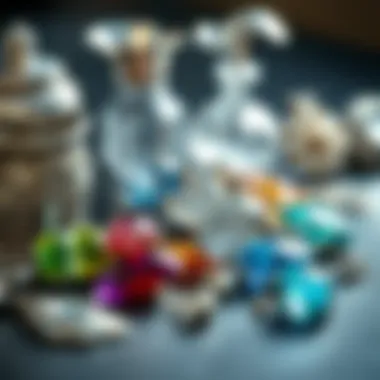
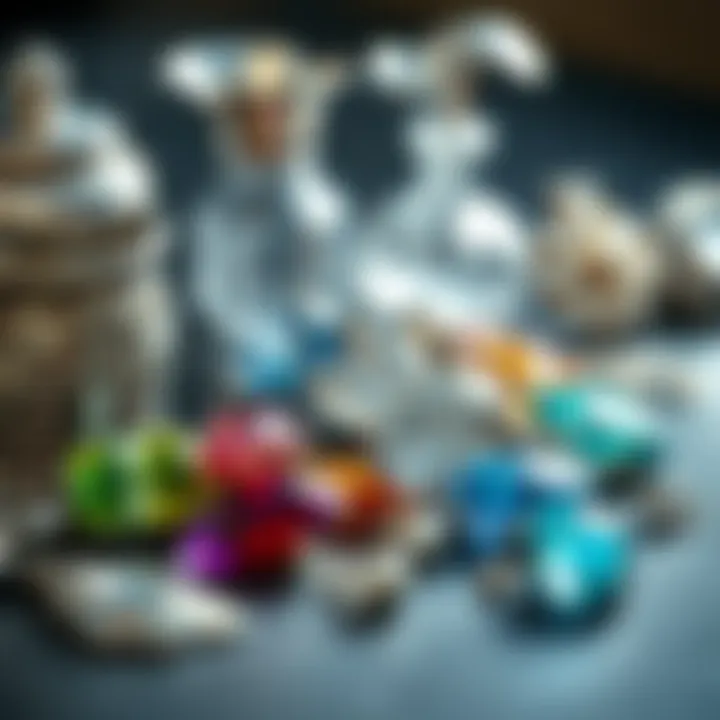
By fostering a habit of prevention and regular maintenance in your silver care routine, you lay the groundwork for a collection that shines bright and stands the test of time.
For further details on silver care and handling, refer to reliable sources like Wikipedia or Britannica.
Engaging in these practices ensures that both collectors and enthusiasts are not simply reactive to tarnishing but are actively preserving the beauty and integrity of their cherished silver pieces.
Addressing Common Misconceptions About Silver Care
Understanding the myths and realities surrounding silver care is essential for those who own or cherish silver items. Misconceptions can lead to improper cleaning habits, which may in turn damage your cherished pieces. Dissecting these myths not only empowers owners with knowledge but also enhances their appreciation for the silver they own. Let's delve into a couple of prevalent myths that often mislead enthusiasts and collectors alike.
Myths About Commercial Cleaners
When it comes to cleaning silver, many people tend to believe that commercial cleaners are the quick-fix solution. Skepticism often arises due to the plethora of products available at any local store, with flashy packaging claiming tremendous results.
It's important to understand that not all commercial cleaners are made equal. Some may contain corrosive ingredients that can do more harm than good. For instance, a cleaner that promises to remove tarnish instantly may include harsh chemicals that erode the surface of your silver over time. The residue left from such products can turn your polished silver into a dull, lifeless piece, requiring even more effort to recover its luster.
- Inert Ingredients: Many commercial cleaners use substances that offer only a temporary shine without addressing the underlying tarnish.
- Cost Consideration: While these cleaners can be convenient, they often come at a premium, without necessarily providing better results than DIY solutions.
- Health Risks: Some powerful formulas may carry health hazards if mishandled.
Ultimately, the bottom line is that while commercial cleaners can provide ease of use, they are not always the best route for maintaining your silver's beauty in the long run. Relying on knowledge and organic methods can often yield greater satisfaction.
Reality vs. Myth: Regularity of Cleaning
Many silver enthusiasts grapple with the question of how often silver items should be cleaned. The common myth suggests that frequent cleaning is paramount, leading individuals to scrub their silver pieces more often than necessary. This belief stems from the idea that tarnish is always lurking just around the corner, ready to ruin a beautiful piece. However, the reality is a bit more nuanced.
Regularity in cleaning depends on various factors, including:
- Environmental Condition: If you live in a humid area with high sulfur levels, tarnishing can happen quicker, demanding a more frequent cleaning schedule.
- Usage Patterns: Items that are used frequently may require less cleaning since they don’t have the time to build up tarnish, unlike pieces kept in storage for long stretches.
- Material Considerations: The type of silver alloy also plays a key role. For example, sterling silver tarnishes faster than pure silver, influencing how often you will need to tend to it.
"Over-cleaning can lead to scratches and wear. A gentler approach often yields better results!"
Thus, instead of adhering strictly to a timeline, focus on observation. Assess your silver pieces regularly. Look for signs of tarnishing, and clean them only when necessary. Knowledge, rather than routine, should drive your cleaning practice.
End: Best Practices for Silver Maintenance
When it comes to maintaining silver, the journey towards a stunning shine and tarnish-free gleam does not end with cleaning. Understanding the nuances of silver care is invaluable for both collectors and users alike. This section encapsulates the best practices, ensuring your silver stays as brilliant as the day you acquired it.
First and foremost, consistency is key. Regular cleaning, even of pieces that seem shiny, can help prevent oxidation before it takes a noticeable toll. If tarnish begins to form, it’s usually easier to deal with in its early stages versus waiting until it's thick and grimy.
Practical Prevention Tips
- Store Away from Humidity: Silversmiths will tell you that humidity is a silver's worst enemy. Keeping items in a dry environment can drastically reduce tarnishing rates. Consider investing in anti-tarnish strips or bags that absorb moisture and sulfur, making a world of difference.
- Use Cotton Gloves: If you handle silver often, wearing gloves can keep oils from fingers off the surface. This is especially crucial for items that are displayed, as consistent touch can lead to unwanted smudges and tarnish.
- Wrap It Up: For silverware or jewelry that's not used regularly, you can wrap items in acid-free tissue paper or store them in soft pouches made specifically for silver. The idea is to keep them away from air and light.
Routine Maintenance
In addition to preventive measures, regular maintenance will keep your silver looking pristine:
- Gentle Polishing: Use a soft, lint-free cloth for routine polishing, avoiding harsh chemicals unless absolutely necessary. This daily ritual can help maintain that just-polished look without extensive cleaning.
- Inspect Regularly: Check your pieces for signs of tarnish or damage. Addressing small issues before they escalate can save both time and expense.
Understanding Products
It’s easy to fall into the trap of using any product labeled for silver cleaning. Yet, not all cleaners are created equal:
- Research Before You Buy: Read reviews for products and look for those that have been recommended by gem and jewelry experts. Understanding the components of the cleaners will also help you avoid those that could tarnish your silver in the long run.
- Natural Alternatives: Some gemstone enthusiasts swear by using natural cleaning solutions like vinegar and baking soda, finding them effective without the downsides of harmful chemicals. However, it’s essential to know the right ratios and techniques to avoid damaging your pieces.
"A little knowledge goes a long way in keeping silver as bright as the day you bought it."
Sayings might vary, but the truth does not. Engaging in good practices for silver maintenance not only enhances the appearance of your items but preserves their value over time. Whether you're an enthusiast, a collector, or a designer, the beliefs around care reflect a deep respect for the materials that combine artistry with functionality.
Ultimately, proper silver care requires a blend of vigilance and knowledge. With these best practices under your belt, you're now equipped to maintain your silver pieces with confidence, ensuring they remain breathtaking for years to come. Take pride in your collection and enjoy the benefits of every little effort you put into keeping it in top condition.







